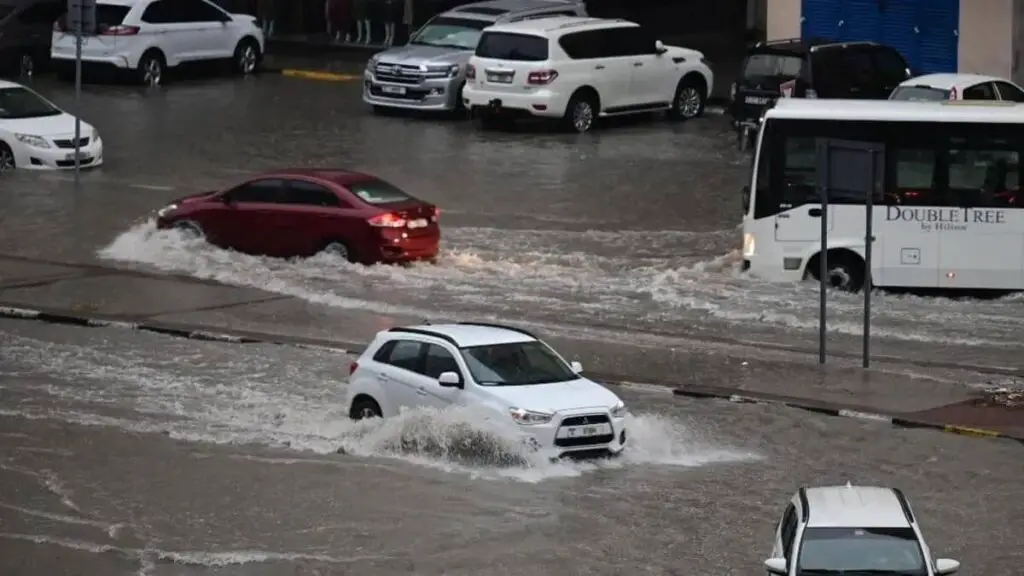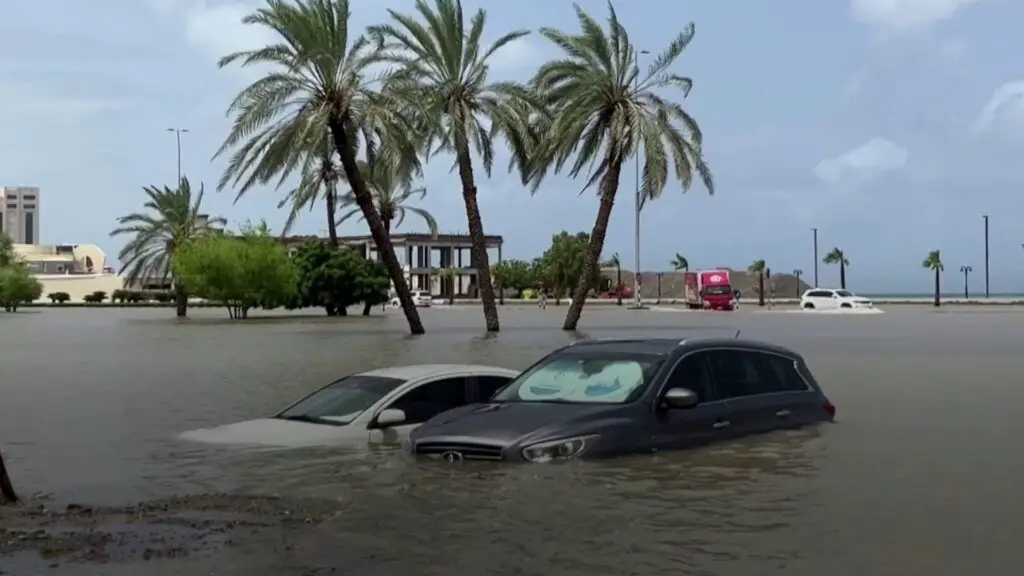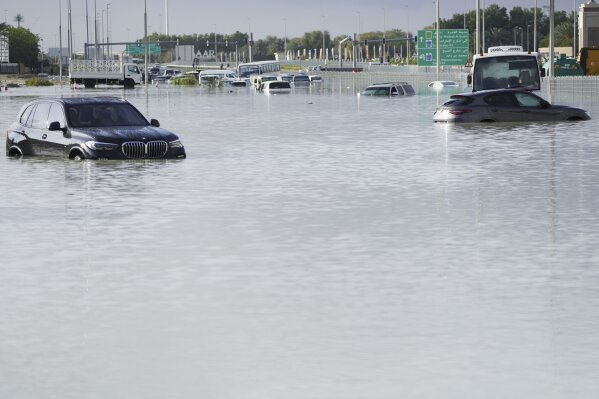Heavy thunderstorms recently battered the United Arab Emirates, unleashing the heaviest rainfall ever recorded in the country’s history. The deluge, which began late Monday and intensified through Tuesday, submerged highways and flooded Dubai’s international airport, bringing the bustling city to a standstill.
According to the state-run WAM news agency, this was a “historic weather event,” surpassing any previous records dating back to 1949. The unprecedented downpour, which measured over 142 millimeters (5.59 inches) in 24 hours, far exceeded the annual average rainfall of 94.7 millimeters (3.73 inches) at Dubai International Airport.
The airport, a vital hub for global travel and home to Emirates airline, faced significant disruptions. Arrivals were halted, and passengers struggled to navigate through floodwaters to reach the terminals. The situation was described by some as “absolute carnage,” with people sleeping in metro stations and the airport itself.

The effects of the storm were not limited to transportation. Schools closed, government employees worked remotely, and many residents stayed home. However, some ventured out, only to find themselves stranded in flooded streets. Tanker trucks were deployed to pump away water, and emergency personnel worked to assist those affected.
While rain is uncommon in the arid UAE, it is not unheard of, particularly during the cooler winter months. However, the lack of regular rainfall has led to inadequate drainage infrastructure, exacerbating the impact of storms when they do occur.
The UAE’s experience is a stark reminder of the importance of disaster preparedness and infrastructure resilience in the face of extreme weather events. As climate change increases the frequency and intensity of such events, countries must invest in robust infrastructure, effective drainage systems, and comprehensive disaster response plans to protect lives and property.

The UAE’s neighboring countries, including Bahrain, Qatar, Saudi Arabia, and Oman, have also experienced heavy rainfall and flooding. In Oman, at least 18 people have been killed in recent days, highlighting the widespread impact of these extreme weather events across the region.
As the UAE and its neighbors continue to grapple with the aftermath of these storms, it serves as a sobering reminder of the urgent need for proactive measures to mitigate the impact of climate change and ensure the safety and well-being of all citizens.


